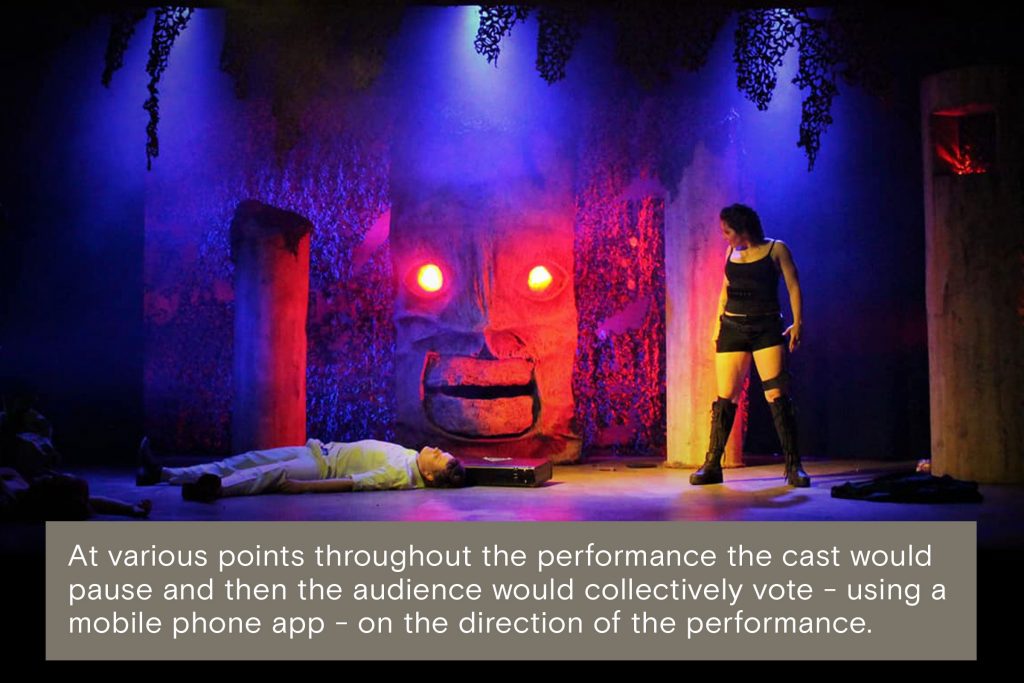
“There are so many stories to tell – and so many ways to tell each story.” That’s Dr Travis Holland’s take on the current media landscape and the evolution of convergent media. Travis is a course director, lecturer and researcher in communication at Charles Sturt University. He believes convergent media has opened up a whole new world of possibilities for today’s professional storytellers and communicators.
In days gone by, media informed and entertained audiences in separate and distinct silos. Television, radio, print, stage and screen. They all ran their own race – and never crossed over into the other’s lane. You were informed. You were entertained. On a good day, you were both. But the experience was certainly not an interactive one, unless you were the unlucky bunny plucked from the audience to participate.
Enter the social media and technological explosion (I’m talking to you, internet, laptops, tablets and smart phones). All of a sudden the boundaries and expectations for modern, professional storytelling were blown away.
There were no rules for engaging an audience. Rather, the creative door was flung wide open and the challenge for communicators was set: come forth with your creativity and explore the unexplored. Mix and match technologies. Do what has never been done – or even thought of – to capture the attention of your audience. Engage them. Seek out new audiences, en masse or niche markets, and delve into every nook and cranny to reach them – whether they are in your own backyard or on the other side of the world.
What is convergent media?
So, what is this ‘convergent media’? Well, at its simplest it’s combining various media platforms to entertain or convey information to an audience. It’s about merging separate media into one integrated form. Fuelled by the rise of new technologies, convergent media brings together a mix of communication elements. Dr Holland notes that convergent media is ever-evolving and limited only by your creativity.
“This is an extraordinarily exciting time to be a media producer. There are so many storytelling options, different channels available and different ways an audience can find content. We can tell interesting stories using many different platforms.

“And it’s global, so you can find your niche audience – wherever they are. And that means good ideas – creative ideas – will cut through and find their audience.”
Convergent media is here – and you’re a part of it!
You might not have even noticed, but odds are, Travis believes, you’re already knee deep in the world of convergent media.
“Essentially, it’s about different forms of media now being housed by the same device. Take the mobile phone as an example. It can be used for audio, video, text or graphics. And the internet itself is a convergent medium. It carries all different content – side-by-side. What this means in a practical sense is audiences and industries that are fluent in many media forms coming together in the same delivery channel. It’s a merging of shared media.”
While new technologies will undoubtedly present opportunities we are yet to imagine, our existing range of media continues to evolve.
“A decade ago Netflix emerged as a TV disruptor and is now reinventing itself again. For example, shows no longer have to have a standard running time – each episode is as long as it needs to be.
Dr Travis Holland
“And pieces like Black Mirror: Bandersnatch – a standalone 2018 interactive film that was also part of the wider series – had a ‘choose your own adventure’ ending. What’s really interesting is it was done not just because it could be done, but to enhance the storytelling. It wasn’t just a case of using technology for its own sake.
“Even things like social commentary on TV is a way of converging those two platforms. And we’ll continue to see experiments between platforms. As we do, the industry will need producers who understand all the various platforms and how they can interact and work together.”
Preparing communicators for the unknown
Dr Holland sees digital media merging humanistic and technical approaches to storytelling. That’s why, at Charles Sturt, we’re helping our students develop the skills needed to produce good communication in every form – for the future.
At Charles Sturt, students studying journalism or digital media in a Bachelor of Communication will build in-demand skills for new and emerging platforms. Then produce content for video, audio, text and the web that brings the user experience and storytelling into one compelling package.
“Students with skills across media will be more employable, and they’ll get to exercise their creativity. This is important because increasingly, as an example, one newsroom will produce many different forms of content. We are already seeing an increase in convergent business structures – like Nine and Fairfax Media where print and TV are now operating under the same umbrella.
“Our traditional journalism course is accompanied by courses in radio and digital marketing. We focus on storytelling for different platforms: audio, video and text. The skills our students develop are ideal for emergent technologies – like bots [pre-programmed software with which people interact] and voice assistants – think Alexa and Google Home or ABC Newsbot on Facebook Messenger.
“Another example is scriptwriting. It’s usually been for the traditional stage and screen, but we have broadened it to include videogames because we’re going to start to see more convergence between cinematic and videogame media.”
With technology evolving, media merging and super creativity being the new currency in the communication industry, there are endless possibilities for telling our future stories in engaging and fresh ways.
Convergent media gets sprung
Convergent media is becoming integral to all areas of communication and creative industries at Charles Sturt. Each year our Bathurst campus hosts a two-week festival of arts and creativity. The SPRUNG Festival is the work of theatre media students in Charles Sturt’s School of Communication and Creative Industries. Graduating theatre media students run the show, but many other students are involved – acting, producing and creating works within this festival.
The festival has a different theme each year and organisers always encourage those attending to become part of the artistic process. This makes the SPRUNG Festival the perfect creative playground for convergent media experimentation.
One SPRUNG production which ramped-up the creative was Rumble. It was a theatre experience which featured an interactive app. Travis explains how it forged new ground.
“This student production was like a choose-your-own adventure. At various points throughout the performance the cast would pause and then the audience would collectively vote – using a mobile phone app – on the direction of the performance.

“So, even in a physical medium, we’re seeing these types of convergent media experiments.”
Ready to explore the unexplored?
Are you interested in a career in communication? Would you like to tell exciting stories in new ways and push your creative bounds?
Our wide range of courses will give you the skills and industry knowledge you’ll need to get qualified and land a job you’ll love. Just like Charles Sturt University alumnus Hamish Macdonald. A versatile news reporter and presenter, Hamish has delivered ground-breaking news, fronted investigative documentary specials and has become a recognisable face right across Australia as a regular co-presenter on The Project. And it all began at Charles Sturt. Here’s Hamish’s story.



You must be logged in to post a comment.